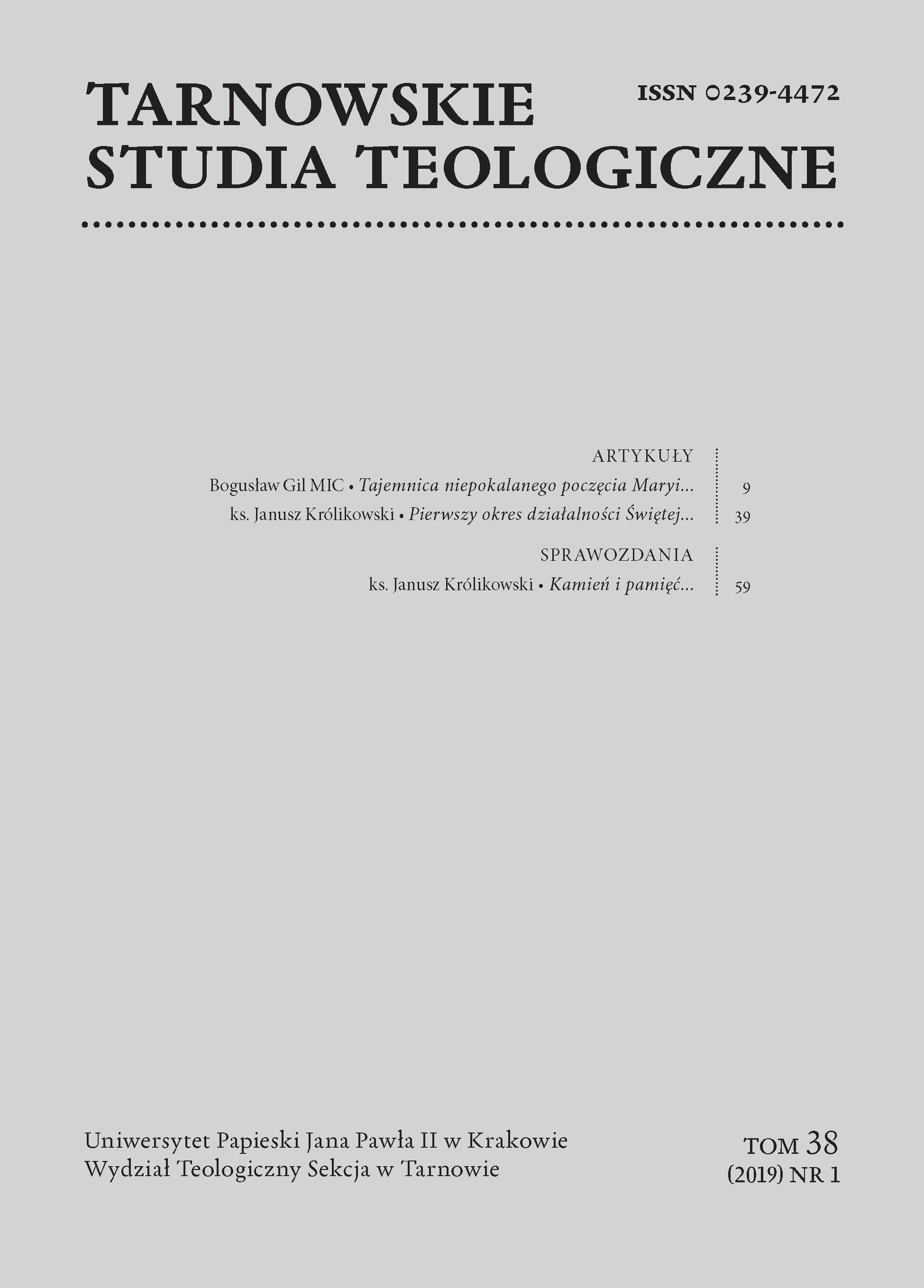The first stage of activity of the Sacred Congregation of Rites, today the Congregation for the Causes of Saints. From the Apostolic Constitution “Immensa aeterni Dei” of Pope Sixtus V to the Apostolic Constitution “Caelestis Hierusalem cives” of Pope Urb
DOI:
https://doi.org/10.15633/tst.38102Keywords:
beatification, canonization, Sixtus V, Urban VIII, Roman Curia, Sacred Congregation of RitesAbstract
The earliest history of the Sacred Congregation of Rites, one of the most important Congregations od the Roman Curia, is essential for the shaping of the modern concept of canonized holiness. It encompasses the period spanning from the promulgation of the Apostolic Constitution Immensa aeterni Dei (1588) by Sixtus V to the Apostolic Constitution Caelestis Hierusalem cives (1634) of Pope Urban VIII. Within this arduous period, an institution was born whose functioning procedures, gradually developing, enabled holiness to be validated in the life of the Church. At the same time it was possible to use the particular examples of saints and blessed to demonstrate which models of holiness represent exceptional spiritual value and contribute to the building of the Church.
References
Bullarium Romanum, ed. L. Tomassetti, t. 8, Torino 1863.
Bullarium Romanum, ed. L. Tomassetti, t. 15, Torino 1868.
De Feo I., Sisto V. Un grande papa tra Rinascimento e Barocco, Milano 1987.
Del Re N., La Curia Romana. Lineamenti stolico-giuridici, Città del Vaticano 1998.
Ditchfield S., Il mondo della Riforma e della Controriforma, w: A. Benvenuti e al., Storia della santità nel cristianesimo occidentale, Roma 2005, s. 261–329.
Dokumenty soborów powszechnych, t. 4 (1511–1870): Lateran V, Trydent, Watykan I, układ i oprac. A. Baron, H. Pietras, Kraków 2004, s. 781–785 (Źródła Myśli Teologicznej, 33).
Giovannucci P., Genesi e significato di un concetto agiologico: la virtù eroica nell’età moderna, „Rivista di storia della Chiesa in Italia” 58 (2004) nr 2, s. 433–478.
Gramatowski W., Polonika liturgiczne w Kongregacji Obrzędów 1588–1632. Studium z dziejów Kurii Rzymskiej, Rzym–Warszawa 1988 (Bobolanum, 13).
Lis A., Casus exceptus. Problemy prawne kanonizacji bł. Wincentego Kadłubka, Sandomierz 2017.
Misztal H., Prawo kanonizacyjne według ustawodawstwa Jana Pawła II. Instytucje kanonizacyjnego prawa materialnego, zarys historii procedury kanonizacyjnej, postępowanie w diecezji i kongregacji, wzory pism i formularzy, Sandomierz 1997.
Obertyński Z., Dzieje kanonizacji św. Jacka, „Prawo Kanoniczne” 4 (1961), s. 79–172.
Papa G., Le cause di canonizzazione nel primo periodo della Congregazione dei Riti, 1588–1634, Città del Vaticano 2001.
Sztafrowski E., Działalność ustawodawcza pap. Pawła VI, „Prawo Kanoniczne” 22 (1979) nr 3–4, s. 4–37.
Vauchez A., La saintteté en Occident aux derniers siècles du Moyen Age, Rome 1981.
Zanotti A., Tra terra e cielo. Prospero Lambertini e i porcessi di beatificazione, w: Prospero Lambertini. Pastore della su città, pontefice della cristianità, a cura di A. Zanotti, Argelato 2004, s. 233–253.
Downloads
Published
Issue
Section
License

This work is licensed under a Creative Commons Attribution 4.0 International License.
Authors who publish with this journal agree to the following terms:
- Authors retain the copyright and full publishing rights without restrictions, and grant the journal right of first publication with the work simultaneously licensed under a Creative Commons Attribution 4.0 International License that allows others to share the work with an acknowledgement of the work's authorship and initial publication in this journal.
- Authors are able to enter into separate, additional contractual arrangements for the non-exclusive distribution of the journal's published version of the work (e.g., post it to an institutional repository or publish it in a book), with an acknowledgement of its initial publication in this journal.
- Authors are permitted and encouraged to post their work online (e.g., in institutional repositories or on their website) prior to and during the submission process, as it can lead to productive exchanges, as well as earlier and greater citation of published work (See The Effect of Open Access).

